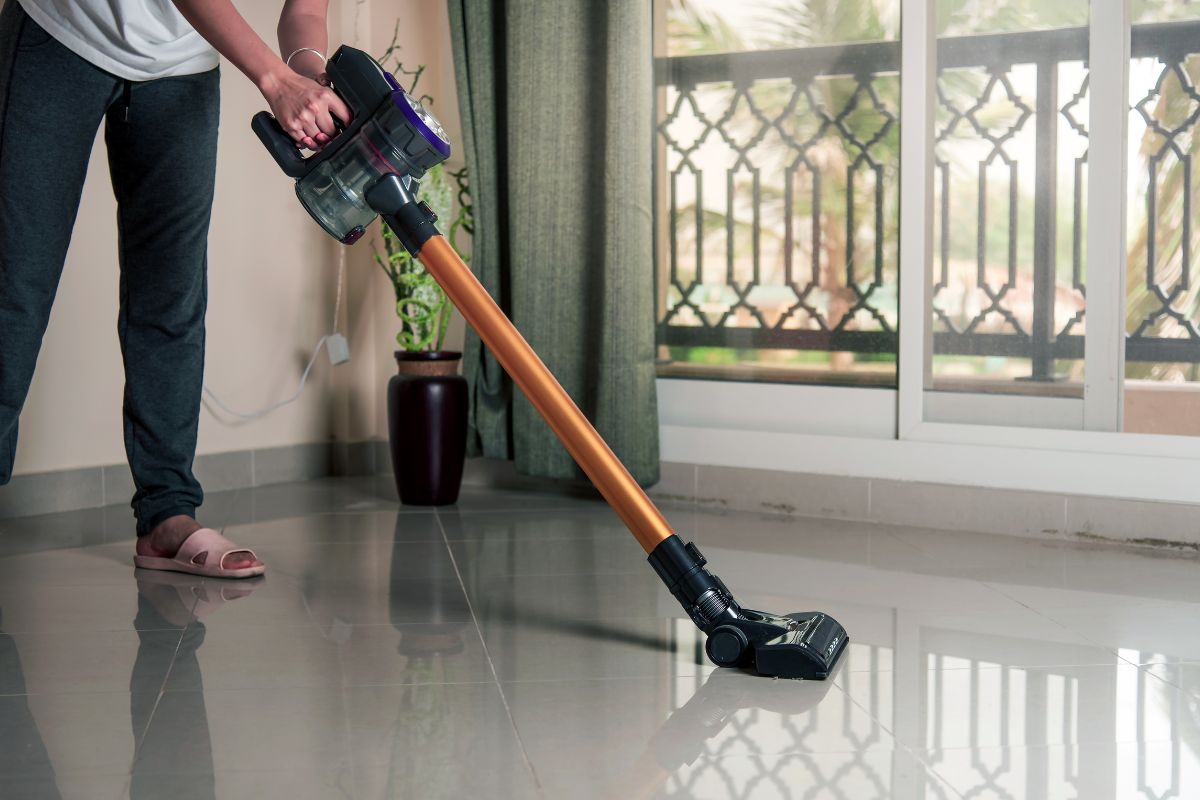While my neighbour Steve still hauls that humongous Henry up and down stairs every Saturday morning. Watching him wrestle with that thing does my head in. Finally, last week I asked him, “Why don’t you just get a cordless vacuum?” His answer? “They’re all rubbish, aren’t they?”
Wrong, Steve. Dead wrong.
I’ve been testing vacuum cleaners for three years now; I started when my old Hoover conked out and I couldn’t face purchasing another dud. It started off simply enough as a research thing, but I became downright obsessed with it. (Yes, I know, my family thinks I’m mental, but I have actually tested dozens of different models.)
Here’s what I have dug up about vacuum cleaners and why cordless models have turned into the wisest option for most British homes.
The Big Five: Types of Vacuum Cleaners
Let’s start with the basics. There are five types of vacuum cleaners you can find in stores. Each has its functions, but some are more suitable than others for contemporary living.
- Upright Vacuums: The classic beasts! These models have higher-powered motors and stronger suction and are great for deep cleaning carpets. My mum still swears by her ancient Dyson upright; the thing’s 12 years old! But the catch is that they’re heavy and awkward to carry on stairs, and they take up a ton of storage space.
- Canister Vacuums (or cylinder vacuums, as we call them here) have the motor removed from the cleaning head. They are also typically quieter and offer more suction for bare floors and are more manoeuvrable around furniture. One of my sisters has this type and loves how it works on her hardwood floors. The downside? You’re dragging this canister around behind you, like a reluctant dog.
- Stick Vacuums come in two types: corded and cordless. The ones with a cord offer you consistent power and force you to stay tethered to the wall. Cordless stick vacuums are where things get interesting. Their small, lightweight bodies make them more agile than upright vacs, and you do not have to scour your rooms looking for plug sockets when cleaning.
- Handheld Vacuums are brilliant for quick jobs. I have one in my car for getting rid of crisp crumbs and the mud from football boots. They’re not really substitutions for your main vacuum, but they’re dead handy for those spot cleaning jobs.
- Robot Vacuums do the work while you put your feet up. Sounds perfect, right? Well, sort of. Contemporary models like the Dreame X50 Ultra, the iRobot Roomba j7+ and the Shark IQ Robot have smart features like mapping capability and self-emptying bases, but they still have a problem with stairs, and, occasionally, furniture legs can leave them bewildered. The Eufy RoboVac 11S is a good budget option if you want to test robot cleaning on hardwood floors without investing a lot of money.
Why Cordless Wins for Most Homes
Having lived with so many different types of vacuums, the cordless stick has won me over completely. And here’s why they’re often the best cordless vacuum for British homes:
- Freedom of movement changes everything. You can clean the car, deal with cobwebs in corners or give the stairs a once-over in just a few minutes, with no faff. I cleaned my entire house (three bedrooms, two bathrooms, stairs, downstairs) all in one go last month. Try that with a corded vacuum.
- Storage is a doddle. My cordless Dyson hangs on the wall in a cupboard. About the same size as an ironing board. Compare that with trying to find a place to cram a huge upright vacuum.
- They’re actually powerful now. The early cordless vacuums were nothing to write home about. Modern ones pack serious suction. My Dyson V8 picks up dirt that my old Hoover WindTunnel upright left behind, especially around the edges of the carpet, where they meet the skirting board. The Tineco Pure One S12 and Bissell CrossWave Pet Pro also deserve mention for decent suction at lower prices.
What Actually Matters When Choosing
Forget the marketing nonsense. In our testing of dozens of models, here are the three things that dictate whether a cordless vacuum is worth investing in:
- Battery life comes first. On normal power, most decent models are good for 20–30 minutes, which is more than enough for most British homes. On eco mode, the Dyson V15 Detect runs for a maximum of 70 minutes, but on high power, you’ll get 15 or so minutes. And that’s more than enough for problem spots.
- Suction power is what distinguishes great vacuums from mediocre ones. The V15 outputs 124-inch sealed suction; it’s really powerful. I tested it on the rug where my cat loves to moult his winter coat. Incredible what it pulled out.
- Weight counts more than you’d ever believe. Anything that weighs over 7 pounds makes you tired very easily. I learned this the hard way with a heavy model that had me in pain post-cleaning after cleaning the stairs. Lighter vacuums promote more frequent cleaning because cleaning stops feeling like labour.
The Best Performers Right Now
Several models stand out from the crowd in 2025:
The Dyson V15 Detect remains the best cordless vacuum I’ve tested. That green laser dirt-detecting gizmo for hard floors is just genuinely helpful. My neighbour Sarah borrowed it and couldn’t believe what the laser showed her on her “clean” kitchen floor. A bit shocking, actually. At around £600, it’s on the expensive side but well worth the money.
The newer Dyson Gen5 Detect boasts even more power at up to 70 minutes of runtime, though at £750 it’s certainly a premium purchase. I have not had the opportunity to test one out personally, but the specs are impressive.
For performance, the Dyson V8 Absolute is still fantastic for the price. My item is three years old but still looks new. Great for regular cleaning routines and often available for around £300-400 now.
The Dyson V11 Outsize has a bigger dustbin and longer battery life, which is really handy for bigger houses. My cousin got one for his four-bedroom house and says it’s incredible.
Miele Duoflex HX1 Cat & Dog is the best option for pet owners. My friend Emma has two golden retrievers, and this thing outperforms anything I’ve ever seen for pet hair. The anti-tangle brush actually works.
The Shark Stratos IZ400UKT performs well, but without the Dyson price. I borrowed my sister-in-law’s for a week and was amazed at what you get for £250 or so.
Budget shoppers might prefer the Vax Blade 4. At less than £150, it’s basic but does the job for a smaller home. Not as strong as high-end models, but more than adequate for light cleaning.
Real-World Performance
You learn nothing by testing vacuum cleaners in a sterile lab. I also test them on real messes: muddy footprints from the garden, breakfast cereal flung far and wide by my nephew, cat litter traipsed in from the bathroom, and the enigmatic crumbs that breed under sofa cushions.
In general, most cordless vacuums excel at daily cleaning. The trick is to use power settings that are appropriate for the job. I use eco mode for quick daily tidying and ramp up to maximum power for deep cleaning sessions or stubborn messes.
Battery performance varies dramatically between settings. The right cordless vacuums do well in testing, but real-world battery life depends on how you use the device. Max power destroys the battery life; while it might be useful for spot cleaning, it is definitely not suitable for cleaning an entire house.
Making Your Decision
Your home determines which vacuum works best. Large homes with various flooring types benefit from canister vacuums for their versatility and powerful cleaning capabilities, while homes with primarily carpets might prefer upright vacuums for efficiency.
But for most British homes, such as terraced houses, flats, and modern developments, cordless stick vacuums offer the best balance of power, convenience, and storage. They handle mixed flooring, work brilliantly on stairs, and store easily.
Consider your cleaning habits, too, if you’re like me and prefer quick, frequent cleaning sessions rather than marathon weekend sessions, cordless convenience encourages regular maintenance.
The right cordless vacuum is simply the one you’ll use regularly. When cleaning becomes effortless, you actually do it more often. Your guests will thank you for that.






